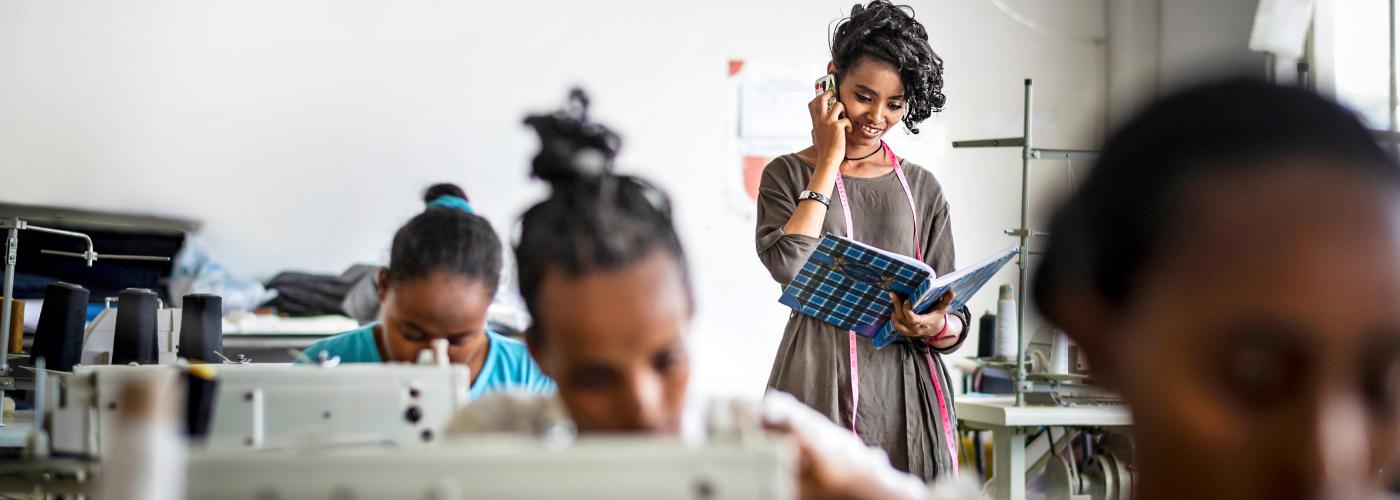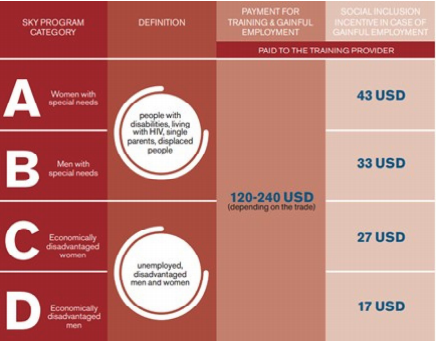Pay-for-Results Strategies Bring Economic Inclusion for Women and Youth
Image

This post was originally published on Helvetas' website and written by Chalachew Gebeyehu, SKY Project Manager, Helvetas; Bettina Jenny, Head of Skills Development & Education, Helvetas; and Sabrina Würmli, Advisor for Skills Development, Helvetas.
From South Asia to Sub-Saharan Africa, performance-based contracts and financial incentives are leading to sustained gainful employment of disadvantaged groups. This innovative financing mechanism also increases the effectiveness and efficiency of existing resources in different countries.
Despite strong economic growth, Ethiopia has high youth unemployment rates, which are often linked to a lack of quality education, high levels of school dropouts, or a skills mismatch. Kalkidan Mulat was not able to continue her education after ninth grade because she had to support her family. Later, she had the opportunity to participate in Helvetas’ Skills and Knowledge for Youth (SKY) project where she attended a training program in tailoring. “Today, I am employed and have a regular income,” says Kalkidan. She has also become a peer advocate of the program. “I recommend such practice-oriented training programs to all young people here in my town,” says Kalkidan. “If young people get a good training and become skilled workers they can afterwards also support their families.”
The SKY project began in 2015 in the Amhara Region in Ethiopia. The project focuses on increasing the employability and labor market insertion of disadvantaged youth like Kalkidan. The practice-oriented training program focuses on both skills development and job placement, ensuring Kalkidan and fellow participants are supported by their trainer to find employment.
A key factor in SKY’s success is the application of a differential pricing system to support the social inclusion of disadvantaged groups. Training providers receive financial incentives for placing youth and especially women with special needs (e.g. school dropouts, single parents or displaced people) in the labor market.
Image

A performance-based approach for improved employment
The figures of a recent tracer study, which measured employment effects in Ethiopia, confirm that the RBF approach is working in Ethiopia; 83% of graduates found employment within one to three months after graduation. But how exactly does this approach work? The RBF is a gradual payment approach. The training provider receives 25% of the payment a few weeks after training starts to cover initial training costs such as supplies, 45% of the payment after completion of the training, and the remaining 30% plus social inclusion incentives four months after the training. The training providers only receive the full payment when at least 80% of trainees pass the skills test (second installment) and if at least 80% of graduates are gainfully employed within six months (third installment).
Mulu Asefa works for a private training provider that offers courses in cooking and hospitality. She explains the benefits of the RBF approach: “First, we get money for realizing important steps for youth to find employment. Second, from a government perspective the approach has potential to reduce overall youth unemployment rates. Third, the project is focusing on the poorest of the poor and offers them a way to earn an income.”
Paying for results helps to scale and foster innovation
The RBF approach has proven to be effective for scaling and replication in other locations. Since payment is directly tied to performance, training providers also need to innovate to guarantee that youth not only find, but also retain employment. Hence, they need to consider new labor market trends to ensure that skills reflect the needs of the private sector.
This unique training approach also attracted attention from Amhara’s regional government. Diresie Eshetu, deputy head of the ANRS TVED Bureau says, “The RBF approach is a very effective, participatory, and transparent approach which gives attention to outcomes and beyond that uses a very systematic mechanism for measuring the performance.”
Successful replication of RBF experience across countries
Helvetas first applied the RBF approach in the Employment Fund in Nepal. The Employment Fund trained 100,000 youth and brought 90% of them into employment. This success story led to the replication of this model in skills projects in various countries, including Ethiopia, Bangladesh, Mozambique, Myanmar and Tanzania. In many of these countries, a pay-for-results mechanism was introduced for the first time and has the potential to transform the vocational training system. Many training providers now see concrete incentives to do more than just execute training and encourage graduation; they can also play an active role in job matching. This new perspective and expanded role of training providers ultimately supports employment promotion and the inclusion of disadvantaged youth.
Lessons learned
Our main lessons learned on applying pay-for-results strategies:
- SKY Project Manager Chalachew Gebeyehu says, “Most of the youth in Ethiopia do not get proper career services or information on the labor market. Training providers cannot replace the role of the individual, but they can strengthen youth and support them to find employment or start their own business. They should support them starting small, but then grow step by step and constantly support and motivate them.”
- The establishment of robust monitoring systems is a must since payment is directly linked to the results achieved. The monitoring system must be reliable, transparent and trusted by the training providers. In addition to this verification of employment results, most Helvetas projects also conduct tracer studies, which verify if graduates retain employment over longer time periods.
Read a full account of shared learnings through the SKY project in NORRAG's "Case Study of Results-Based Financing for Vocational Education and Training."


